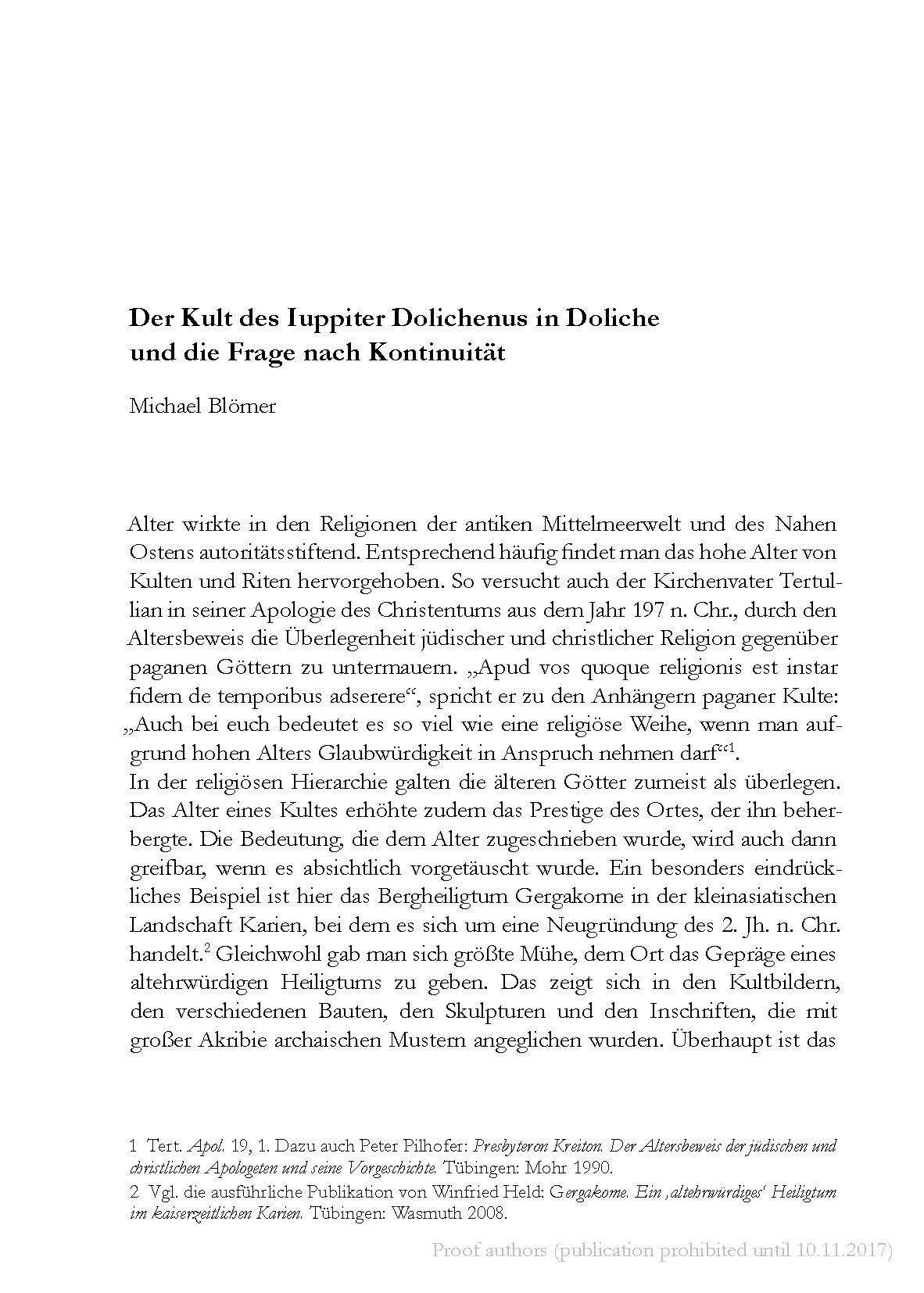New publication: Der Kult des Iuppiter Dolichenus und die Frage nach Kontinuität
by Assistant professor Michael Blömer.

To improve insight in the fabric of Near Eastern culture during the Roman Period, it is in many respects essential to better understand to what degree pre-Hellenistic traditions were still existent and involved in the shaping of new expressions of material culture. This pertains to the religious field as well. In the rural hinterlands of North Syria, for example, Iron Age religious iconography suddenly reappears in the Roman period, suggesting a continuity of religious beliefs over hundreds of years. In a newly published book chapter, Michael Blömer examines this phenomenon, its trajectories and implications. His focus is on the evidence from the sanctuary of Jupiter Dolichenus in Doliche, where archaeological fieldwork has produced new evidence for the continuity of religious practices from the Iron Age to the Roman period. The article is included in the conference proceedings “The Limits of Change – Was ist der Wert der beständigen Dinge”, edited by Laura Picht, Katharina Schmidt, Geraldine Schmitz and Lukas Wiggering. The proceedings examine the social value of continuity from an archaeological, ethnological and philosophical perspective.
Blömer, M. (2015). Der Kult des Iuppiter Dolichenus und die Frage nach Kontinuität. In Picht, L., K. Schmidt, G. Schmitz & L. Wiggering (eds.), The Limits of Change: Was ist der Wert der beständigen Dinge? Berlin: Neofelis Verlag, 103-122.
